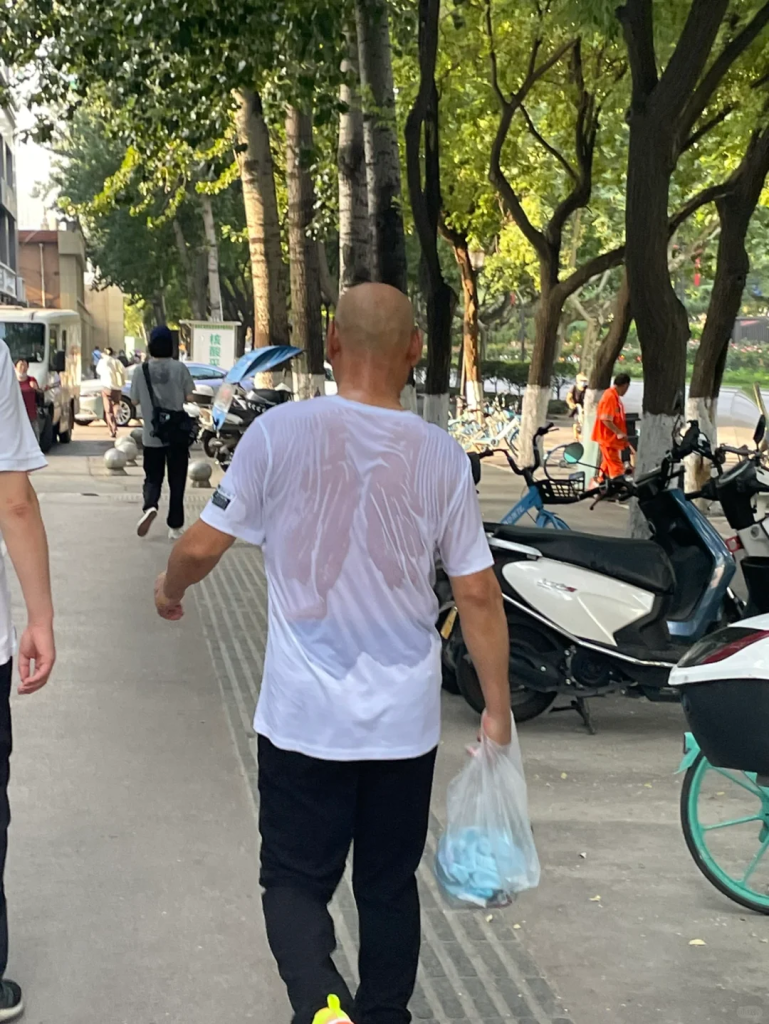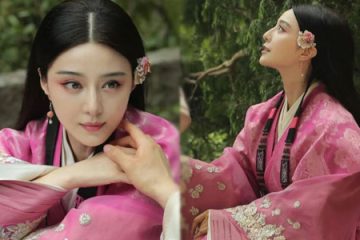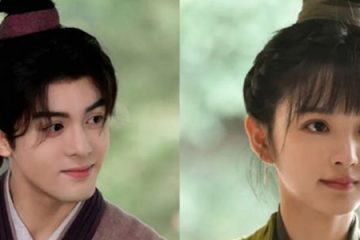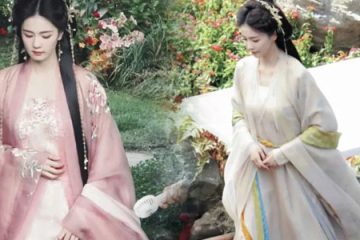Why Were the Necklines of Women’s Clothes in the Tang Dynasty So Low?

When we look at the paintings of the Tang Dynasty, it’s not hard to notice that the collars of Chinese dress for women in the Tang Dynasty were designed to be low, and some were even so low that they could make people blush. Moreover, this phenomenon was quite common during the Tang Dynasty. What could be the reasons for this? According to the stereotype, weren’t the ancient people supposed to be more conservative? So, what was the purpose of having such large collars?
Ⅰ. Other Reasons
To some extent, the low collars of women in the Tang Dynasty were related to several factors. The prosperous economy of the Tang Dynasty, the ascension of Empress Wu to the throne which boosted women’s confidence to a certain level, the mutual integration, communication, and learning with the costumes of ethnic minorities (such as Hu clothing), and the concepts of the ancient people at that time all played a part.

After Empress Wu Zetian came to power, she made great efforts to govern the country with determination and diligence, and China’s economy thrived. Women became confident and bold in showing off their beauty, and many styles became popular. We have previously talked about the makeup styles and the aesthetic trend of women wearing men’s clothing during the Wu Zhou period. The saying that “the more developed the economy is, the more diverse the beauty that women can display” holds true for the Tang Dynasty.

Various elements of the costumes of ethnic minorities also had a certain connection with the styles of Tang Dynasty clothing. At that time, the ancient people believed that in fact, a woman’s feet were something that could only be shown to her husband, as the feet were regarded as a private part of the body. However, the chest was not considered in the same way. It seemed that there was nothing wrong with having a larger opening at the collar. But objectively speaking, the reasons were far more than that, and it was also closely related to the climate.
II. Reasons Related to Climate
Zhu Kezhen (竺可桢), a renowned Chinese meteorologist, wrote an article titled A Preliminary Study on the Climate Change in China over the Past Five Thousand Years. In this article, he mentioned that the Tang Dynasty was a typical warm period. Especially in the capital city of Chang’an, during the intense heat of summer, the discomfort was almost unbearable. Even the emperor would go north to escape the heat, and bestowing ice cubes to his ministers was considered the highest form of reward.
Chang’an is what we now call Xi’an (really hot in summer). Its latitude is equivalent to that of present-day Nanjing. There are simply too many posts advising people to avoid going to Xi’an, saying that summer is not a good time to visit there. 😵

At that time, the climate had reached an average annual temperature of over 20 degrees Celsius. Therefore, to a certain extent, it was precisely the weather conditions that led to the unprecedented development of round collars, open collars, front-facing openings, and short-sleeved clothing for both men and women in the Tang Dynasty. Various light silk fabrics could be seen in different styles of Tang Dynasty attire.

From the early Tang Dynasty to the prosperous Tang Dynasty, this kind of drooping collared shirt that was as low as the chest was once popular. The collars could be divided into styles such as the open collar (U-shaped collar) and the heart neckline. That is the style we can see in various murals that make people blush, and this kind of clothing was quite common during that period.

The poems written by literati are even more a testament to history. They describe the heat in Chang’an so vividly that one can almost feel it even through the screen. Bai Juyi wrote, “My feet are steamed by the heat of the earth, and my back is scorched by the bright sun.” Wang Wei wrote, “The inns in Chang’an are as hot as a boiling pot.”

However, this warm climate didn’t last long. It only lasted for about a hundred years. Around the time of the An Lushan Rebellion (around the 8th century), the weather basically began to gradually turn cold. By observing the common clothing styles in the above painting of ladies, one can roughly understand the changes in the collar structure and the layering of the clothes, such as the transition from short sleeves to long sleeves, and from narrow sleeves to wide sleeves. I believe you have already understood this.

Therefore, during the middle and late Tang Dynasty and the Five Dynasties period, the collars of women’s clothes mostly returned to a normal level. The top of the skirt was tied up at the chest, and the style of layering a large-sleeved garment over a small-sleeved one became popular. The exposed skin areas were reduced, and it does make sense when you think about it.
Interestingly, some time ago, we wrote an article about Ming Dynasty clothing and their relation to the Little Ice Age period. We often say that the clothing in the Tang Dynasty was open and unrestrained while that in the Ming Dynasty was conservative.
In the Tang Dynasty, light and thin silk was popular, while in the Ming Dynasty, various slightly thicker silk satins were in vogue. In fact, these are also reflections of how the ancient people lived in different weather conditions. It is precisely because clothing reflects life that we can now see so many rich and diverse styles of Hanfu.

Summary
Dressing is also a kind of wisdom in life. Most of the time, it is not necessarily led by fashion trends, but our spontaneous habits that determine the way we dress. It also gives us a lot to think about regarding our current clothing choices in daily life.
For example, why do we like to wear round-collar hanfu in the hot summer? It’s for better heat dissipation. Why do we rely on high collars in winter? It’s to keep out the wind and cold. It turns out that the climate has already given us the answer as to why certain styles were popular in different dynasties.



0 Comments